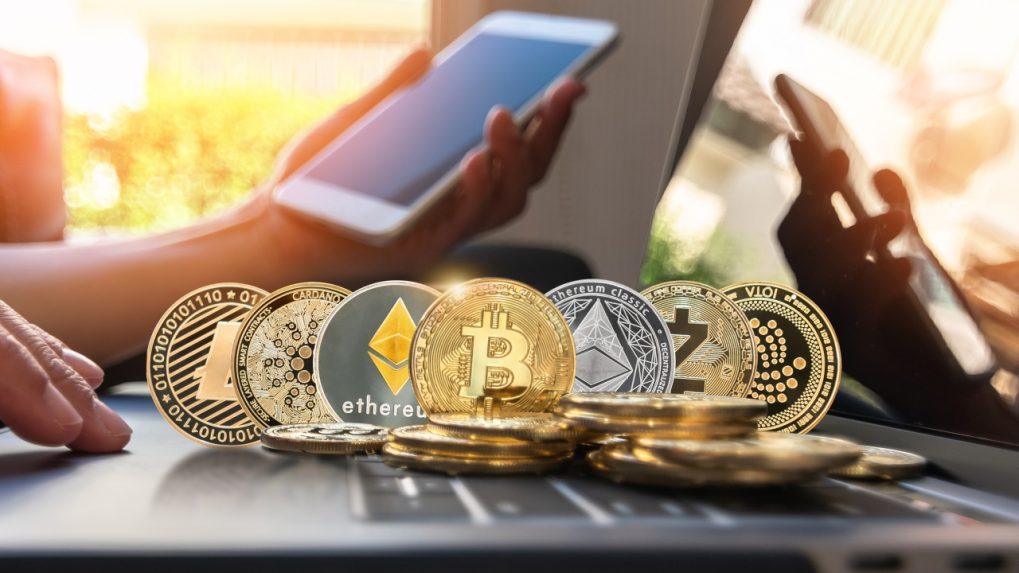
Mini
Tag along as we explain the meaning and difference between mineable and mintable tokens:
The terms ‘minting’ and ‘mining’ are used pretty extensively in the cryptoverse. Some investors and traders, especially newbies, even use these terms interchangeably.
However, while both these terms refer to the production of new tokens, they are worlds apart. So, tag along as we explain the meaning and difference between mineable and mintable tokens.
Mineable tokens
Mining has been popularised by Bitcoin and its proof-of-work consensus mechanism. It’s a complicated process wherein miners compete to solve complex mathematical puzzles. These puzzles require a lot of computational power, and the first miner to arrive at the correct answer earns the right to add a new block to the blockchain. The miner is awarded 6.25 newly produced bitcoins in exchange for their efforts.
All proof-of-work blockchains employ this mining process. Different blockchains may have slight variations, but the general process remains more or less the same. It is a power-consuming and difficult process, but the rewards generally make good on the resources invested.
Mineable tokens can also be produced through staking. Here, instead of computational power, users must contribute a portion of the network’s native cryptocurrency to participate in the block verification and addition process. They are awarded newly-created coins when they create a new block.
Mintable tokens
Mintable tokens are created using smart contracts. They do not require any block production process, physical resources or a consensus mechanism. This ease of creating tokens allows developers to increase supply as and when needed, depending upon the underlying business model. Mintable tokens can also be burned just as quickly to decrease supply and keep the coin’s price and the project’s tokenomics in check.
Use cases of mintable tokens
NFTs are one of the biggest use cases for mintable tokens. Before selling artwork as an NFT, it must first be minted as a token on the blockchain. On Ethereum, developers can use the ERC-721 token standard to mint a near-infinite array of things into NFTs. The thing about NFTs is that, unlike mineable coins like BTC or ETH, they are unique and can’t be replaced. So, while you can exchange one bitcoin for another without losing any value, you cannot exchange 1 BAYC NFT for another, as they are both unique and differ in value.
Another use case for mintable coins is algorithmic stablecoins. As mentioned earlier, mintable tokens can be easily created or burned using smart contracts. This makes them ideally suited for algorithmic stablecoins. These tokens are pegged 1:1 with the value of some other currency or commodity, such as the US$. Therefore, one unit of the stablecoin would be worth $1.
Algorithmic stablecoins use smart contracts to create or burn coins to keep the valuation steady and at par with the US dollar. For instance, if the price of a stablecoin rises above $1, the smart contract will create more coins. The increased supply will decrease the price and bring it back to $1. On the other hand, if the price falls below $1, the smart contract burns some of the supply.
This creates scarcity and causes the price to rise, thereby maintaining the peg.
Decentralized exchanges (DEXs) also use mintable tokens. For instance, a platform like Uniswap rewards users who deposit their tokens in a liquidity pool (LP). A part of this reward is paid out in the DEX’s native LP token. The amount of LP tokens a user receives is proportional to the number of tokens he/she has contributed to the liquidity pool. As such, LP tokens cannot be dependent on mining. Instead, they are generated as mintable tokens by a smart contract as and when required.
Conclusion
Most mineable tokens, such as Bitcoin and Ethereum, are household names in the cryptoverse. It takes time, effort and significant resources to produce these coins. On the other hand, mintable tokens can be produced or destroyed with ease and whenever the project requires. As such, while both kinds of tokens are an essential part of the cryptoverse, they are worlds apart and serve different purposes in the digital asset industry.
First Published: IST
This news is republished from another source. You can check the original article here

Be the first to comment